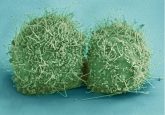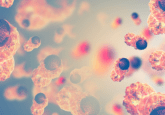Genomic analysis identifies how malignant cells evolve to cause relapse in ALL

A new study published in Nature Communications reports the results of a highly sensitive genomic analysis, which identified novel details concerning how malignant cells in acute lymphoblastic leukemia (ALL) evolve to survive chemotherapy, resulting in disease relapse. The research team, based in the USA, believe their findings will lead to new tests to monitor children in remission from ALL – a leading cause of cancer mortality in children – and detect signs of recurrence.
The researchers analyzed the genomes of cancer cells from 20 children with ALL that has recurred after therapy. Notably, the researchers were able to analyze in detail the genomes of the cells at three different stages of the disease – diagnosis, remission and relapse. This enabled them to investigate the mutations that could potentially be responsible for relapse in ALL.
Corresponding author Jinghui Zhang from St. Jude Children’s Research Hospital (TN, USA) explained: “In our study we wanted to find out the underlying mechanism leading to cancer relapse. When the cancer recurs, is it a completely different cancer, or is it an extension, or change, arising from pre-existing cancer?”
Deep whole-exome sequencing of the cancer’s clonal cells allowed the researchers to detect with great sensitivity the mutations in the clones that survive therapy (the rising clones), and those eradicated by therapy (the falling clones) at the three disease stages. Previously, studies have concentrated on analyzing the relapsed clone, employing genomic analysis to trace back its origin; however, such analyses are unable to detect the low levels of the cells that are responsible for relapse at diagnosis.
This analysis of the clonal cells highlighted the mutations driving ALL and characterized how diverse the mutations were both at diagnosis and relapse. The analysis indicated that the cancer cells were mutating diversely throughout all three stages of the disease. Importantly, the researchers discovered that in the majority of cases, the cancer recurrence was caused by a subclone population present at an extremely low level, which had persisted through chemotherapy.
This finding has implications for genomic analysis of ALL following a patient’s treatment, to determine the probability of relapse. Zhang commented: “When we are analyzing for the level of minimum residual disease in monitoring remission in patients, we should not only pay attention to the mutations in the predominant clone, we should also be tracking what kinds of mutations exist in the minor subclones.”
The team were also able to identify seven specific genes that were highly likely to be mutated in relapsed disease – NT5C2, CREBBP, WHSC1, TP53, USH2A, NRAS and IKZF1. Following on from this study, researchers are now investigating the biological functions of these relapse-related genes in the hope of identifying potential drugs that target their mutational function.
As well as being effective in ALL, the methodology developed in this study – specifically the use of highly sensitive genomic analysis of cancer cells – has the potential to be as effective when investigating the evolution of other cancer types.
Sources: Ma X, Edmonson M, Yergeau D et al. Rise and fall of subclones from diagnosis to relapse in pediatric B-acute lymphoblastic leukaemia. Nature Communications, DOI: 10.1038/ncomms7604 (2015); St. Jude Children’s Research Hospital press release




